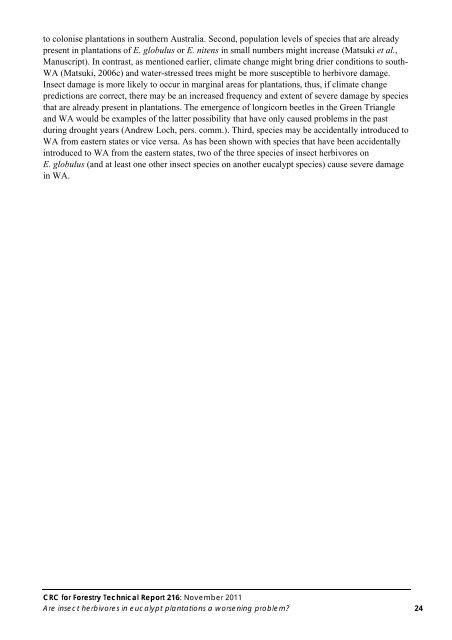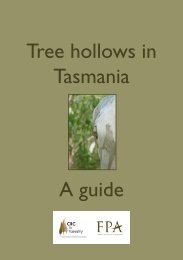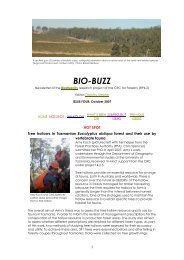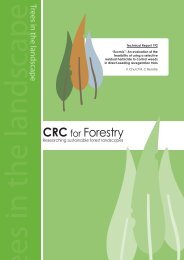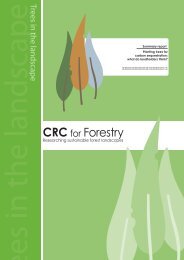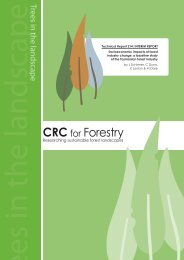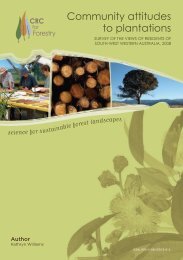CRC Forestry - CRC for Forestry
CRC Forestry - CRC for Forestry
CRC Forestry - CRC for Forestry
You also want an ePaper? Increase the reach of your titles
YUMPU automatically turns print PDFs into web optimized ePapers that Google loves.
to colonise plantations in southern Australia. Second, population levels of species that are already<br />
present in plantations of E. globulus or E. nitens in small numbers might increase (Matsuki et al.,<br />
Manuscript). In contrast, as mentioned earlier, climate change might bring drier conditions to south-<br />
WA (Matsuki, 2006c) and water-stressed trees might be more susceptible to herbivore damage.<br />
Insect damage is more likely to occur in marginal areas <strong>for</strong> plantations, thus, if climate change<br />
predictions are correct, there may be an increased frequency and extent of severe damage by species<br />
that are already present in plantations. The emergence of longicorn beetles in the Green Triangle<br />
and WA would be examples of the latter possibility that have only caused problems in the past<br />
during drought years (Andrew Loch, pers. comm.). Third, species may be accidentally introduced to<br />
WA from eastern states or vice versa. As has been shown with species that have been accidentally<br />
introduced to WA from the eastern states, two of the three species of insect herbivores on<br />
E. globulus (and at least one other insect species on another eucalypt species) cause severe damage<br />
in WA.<br />
<strong>CRC</strong> <strong>for</strong> <strong>Forestry</strong> Technical Report 216: November 2011<br />
Are insect herbivores in eucalypt plantations a worsening problem? 24


